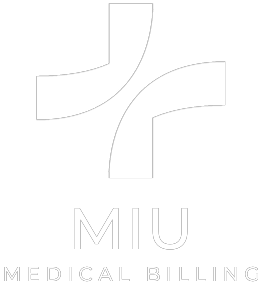1. Introduction
As a medical biller, a provider, or a practice manager, it is very important that you have ample knowledge on Place of Service (POS) codes. These codes consist of two-digit numerics and are used in medical billing for the purpose of indicating the location or type of setup healthcare services were rendered to a patient. It is an essential part of claims that are submitted to the insurance companies, and through these POS codes, they determine the amount of reimbursement to the provider for a given service. These codes simplify the medical college, as only by analyzing two digits can one tell what kind of setup the patient was provided with healthcare services for, e.g., an outpatient clinic, an inpatient hospital, or a physician’s office.
As we all know, different healthcare setups maintain different healthcare standards. Let’s say when you visit a hospital, have a surgery done, and stay there for post-op healthcare services. Most hospitals are well equipped with the latest technologies to facilitate the patient and doctor. At the hospital, you receive more individual attention and prolonged care from the provider, and hence, due to all these reasons, the overhead cost is more than a private clinic. In simple words, different care settings have different staffing, levels of care, and healthcare facilities, and thus different overhead costs. All of this greatly influences how much a provider should be paid, and that’s where POS codes come into action.
As mentioned above, the influence is so great that it is of great importance for a medical coder and biller to precisely choose the correct POS code, as it is a matter of compliance obligation. Errors in these codes can lead to serious issues such as reduced payments, delays in reimbursements, denied claims, and even audits. In some cases, if the errors are repetitive, it can raise red flags for allegations such as fraud and lead to investigations by government agencies.
2. What Is the Place of Services or POS 23 in medical billing?

There are over 50 places of service, each designated to a unique setting and circumstances in which a healthcare service can be provided. In this blog, our main focus will be on one such code known as Place of Service 23 (POS23). The code POS 23 is defined as “Emergency Room—Hospital” by the Centers for Medicare and Medicaid Services (CMS). In other words, what it refers to is a designated area in the hospital that provides emergency medical care 24/7. The types of emergencies can range from a patient experiencing acute symptoms, sudden worsening of health condition, injuries, or any condition that should receive immediate medical attention and intervention. These situations are typically unforeseen and urgent in nature, making the emergency room a crucial part of a hospital and very distinct from the outpatient clinics and physicians’ offices.
Place of service 23 is assigned when the healthcare services are provided strictly within the walls of a licensed hospital’s emergency department; what happens to the patient afterwards does not have an effect on the POS code. It can be quite confusing while handling these codes because the environments may appear similar; hence, distinction is required between those that meet the criteria of POS 23 and those that do not. For instance, emergency rooms of private practices and urgent care setups are not eligible for POS 23. Putting POS 23 codes for non-hospital emergency settings is considered inaccurate and can lead to compliance violations.
3. POS 23 Description and Scope
Place of service 23 (POS 23) is exclusively for services provided at the hospital’s emergency room. The hospital should be licensed and fully equipped with all the essential things and medical staff. It should be open to the people round the clock to provide immediate attention to any patient suffering from acute or life-threatening conditions. The POS code 23 depicts the intensity of care and the necessary resources, which also influence the reimbursement structure.
Hospitals’ emergency rooms are very distinct from other outpatient settings. Emergencies can be of any degree or seriousness; hence, it’s important that the ER is fully prepared to deal with any kind of situation at any hour of the day. Everything should be available at hand, from medicines to lab services and full access to diagnostic imaging. The emergency physician should be present at all times because when a patient comes to the ER, every second counts. All of this justifies the fact that the reimbursements are of higher amounts with claims that are billed under the code POS 23.
Let’s say a patient arrives at a licensed hospital’s ER complaining of chest pain, and the moment he arrives, he is immediately taken care of by the entire staff present in the ER. The emergency physician present runs a series of diagnostic tests like an EKG and cardiac enzymes if he suspects a heart attack. The patient is thoroughly evaluated and then discharged with all the instructions or a referral to a consultant. In this scenario, all the services provided to the patient while he was in the ER will be billed under POS code 23.
4. How POS 23 Works in Medical Billing
When medical billers create claims for the insurance companies, that’s where Place of Service (POS) comes in handy. It is critical for the insurance companies to know if the patient was in the hospital’s emergency room, and hence POS 23 is to be used for such claims to be processed and paid. As we know now, ER patient care has the most resource usage due to its high patient care requirement, specialized equipment, and senior specialists.
The claim under POS 23 signals to the insurance companies a lot of things. First, it was a licensed hospital and not a physician’s office or an outpatient clinic, and secondly, the intensity of care since every patient that lands in the ER means it was a serious health crisis for which the resources were used. As a result, claims with this code demand a higher reimbursement rate than most other situations and settings.
The POS code 23 can also be used in conjunction with CPT codes for representing the level of care provided during an ER visit. These codes are known as the Emergency Department Visit codes, and they range from 99281 to 99285. These codes are graded in terms of complexity, meaning with each level, they require more documentation to ensure accurate billing. For example, CPT code 99281 is used for a low-complexity emergency visit, whereas code 99285 is used for the highest complexity level, i.e., in life-threatening conditions.
5. Quick Facts About POS 23
Place of service 23 (POS 23) should never be used for any services rendered in any other type of healthcare setting other than exclusively designated for a licensed hospital emergency room. Using this code for any other setting will be considered a mistake and can cause serious billing issues such as denied claims and potential compliance violations. Hence, it needs a team of medical coders and billers who are well versed with POS codes and know exactly where to use POS code 23.
When using POS 23, it is essential to note down all the records and clinical notes of the patient. The documentation should mention the symptoms of the patient and the level of urgency of the patient’s health condition, the exact time of service to confirm that the patient received healthcare services within the emergency department, a detailed note by the provider mentioning all the interventions and treatment performed, and finally the details about the patient’s response and treatment outcome (if the patient was kept under observation or discharged). Without proper documentation of all the details, there’s a great chance of claim denial because such documentation ensures that the claim is aligned with the requirements for POS 23.
Incorrect use of POS 23 can lead to unfavorable outcomes. One of the common consequences is claim denial or underpayment. This usually occurs because the insurer may assume that the patient received urgent care services in a private setting and not in a hospital-based ER. If POS code 23 is used where it shouldn’t, it can cause overbilling, which may raise suspicions for fraud, leading to financial recoupments, reputational harm, and audits.
6. Common Billing Errors and Denials with POS 23
Frequent billing errors with POS usually could be due to many reasons. One such scenario could be if POS 23 is used with inappropriate CPT codes. For example, if the CPT code 992133, which is typically used for office visits, is used with POS 23, it can lower the complexity levels. This would result in underpayment or claim denial due to the services inaccurately billed. Such errors can delay the reimbursements or, even worse, result in loss of revenue.
Another common error related to POS 23 is when it’s used for any other setting other than a licensed Hospital Emergency department. This can happen when a biller mistakenly uses POS 23 for freestanding emergency rooms, outpatient clinics, or urgent care centers (non-hospital facilities). This is because it can confuse the biller, as they all offer emergency room services even though they do not meet the requirements of a hospital emergency department as categorized by the CMS. The end result of such a mistake can be denials in claims, underpayments, or overpayments.
Lastly, another common mistake that could occur while billing is insufficient documentation. The claims with POS 23 oftentimes face rejections because there isn’t enough documentation to support the claim that it was an emergency-level care service. The documentation should reflect the severity and urgency of the patient’s condition and justification for the treatment provided. If it fails to do so, it can cause suspicions at the insurance companies, which can later end up being a negative outcome for the provider.
7. Best Practices for Using POS 23

For a successful medical billing and reimbursement, it is essential for the medical billers to ensure accurate and appropriate use of Place of Service 23 (POS 23). Now, there are many ways to minimize errors and maximize accuracy and several key strategies that a medical billing team can implement, such as staff education, system-level controls, documentation standards, and ongoing audits.
Staff education and training is the foundation of accurate POS billing because the more they know, the fewer mistakes they would make. A good team should have a thorough understanding of the meaning and application of all POS codes and CPT codes and know the value of thorough documentation. The staff should be responsible enough to manage all the patient medical records and find the missing gaps between the clinical notes.
For any successful medical billing team, it’s crucial to be aware of the regular updates and any changes in rules and guidelines occurring with time. The team should be keen enough to catch any errors, potential billing issues, or incomplete details before forwarding the claims to the insurance companies.
Nowadays, where everything works through technology, billing accuracy also relies on it. The EHR and clearinghouse systems should be configured in such a way that they can process POS 23 claims correctly.
8. Frequently Asked Question
Q1: What is the difference between POS 22 and POS 23?
POS 23 refers to true emergency room services delivered in a hospital ER, while POS 22 refers to outpatient hospital services.
Q2: Can POS 23 be used for telehealth?
No! POS 23 is strictly for emergency room services provided at the hospital emergency department.
Q3: What services require POS 23?
POS 23 is used for medical services in emergency procedures and diagnostic services ordered during an ER visit.
Q4: What happens if I bill the wrong POS?
Wrong POS can cause delayed payments, claim denials, and reduced payments. Worst case scenario, it can cause compliance audits too. It’s important to identify and make corrections of these errors before sending the claims to the insurance companies.




